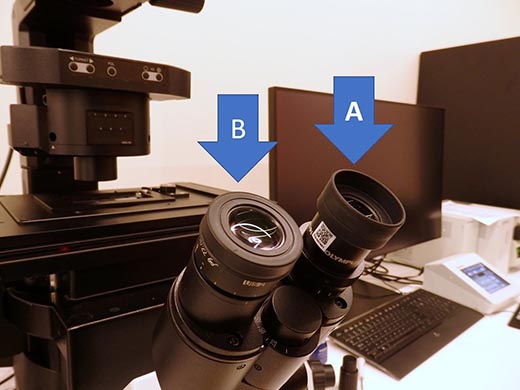Return to the Lab Checklist
Before you head to the lab
- Check the local COVID-19 policies and guidelines.
- Confirm the contact information for your institute and vendors in case you need support.
- Identify the remote operation IT platform available for your institute.
- Consider what can be done remotely and what must be done on-site.
- Plan your microscope observation strategy, incorporating social distancing and remote work measures and clarifying in advance any key questions for your colleagues or vendors.
- Get microscope operation training*1 in advance (remotely if needed).
- (For researchers) Confirm the availability of your samples.
- (For researchers) Discuss the equipment schedule with your team or your lab manager.
- (For researchers) Confirm with your lab manager whether they can conduct training remotely or on site.
When you return to the lab for the first time
- Check that the microscope is operating properly.
- If needed, adjust microscope settings.
- Print and post these reminders about social distancing measures in appropriate places around the lab.
- (For researchers) If you are using lasers or a high-end research microscope, make sure that the air conditioning has been properly adjusted and the room temperature is stable.*2
Before you begin microscope observation
- Clean and sterilize any areas you may touch. You should repeat this step when you are finished as well.
- Consider covering frequently contacted equipment (for example, the eyepieces, keyboard, and mouse). For eyepieces, wearing standard safety glasses can help protect you as well.*3
- Design the experiment so it can be monitored and sustained remotely to reduce the time you’re required in the lab.
- (For researchers) For an overnight experiment, confirm with the facility manager beforehand in case of an unexpected closure of the facility or institute.
*1: Olympus offers remote training support for customers. Please contact us to arrange a session.
*2: Environmental temperature stability is key for reliable microscopy. For optimal laser performance and to minimize thermal drift of the focus, ensure that the AC is turned on in advance and the air temperature is stable before conducting the experiment.
*3: Tips for high-contact areas
To avoid frequently disinfecting your microscope, you can use food wrap to cover the high-contact components. Covering the eyepieces does not affect the image. Although the Olympus touch panel controller will still work with food wrap or when you're wearing thin nitrile gloves, please note that thick rubber gloves (such as PVC) will not work. |
Olympus eyepieces are designed to be used with or without eye glasses or safety glasses. When wearing glasses, fold the rubber eyecup down, like eyepiece B above, from the extended position (eyepiece A). |
このページはお住まいの地域ではご覧いただくことはできません。
このページはお住まいの地域ではご覧いただくことはできません。

